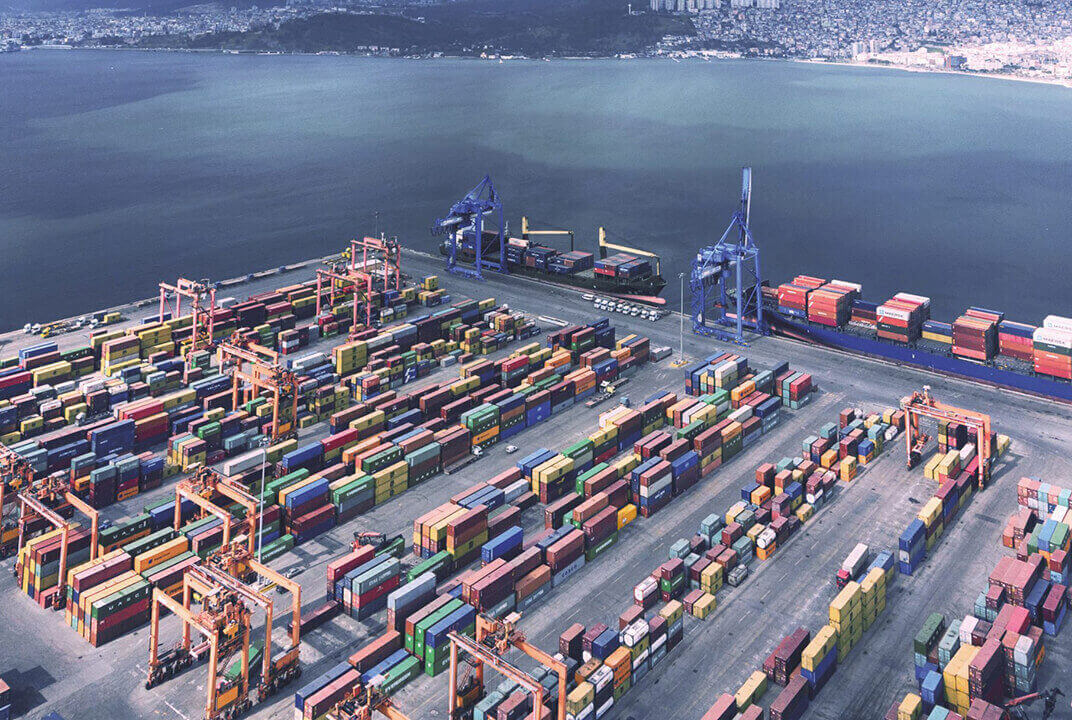Insight | IIoT, connectivity, and the global supply chain
IIoT, connectivity, and the global supply chain
The 2018 edition of our research into Industrial Internet of Things trends, IIoT on Land and at Sea, investigates where IIoT can improve the supply chain and where satellite connectivity is supporting this.
In order to understand our markets we commissioned Vanson Bourne, an independent market research company, to survey 750 IIoT decision makers from the agriculture, energy, maritime, mining and transportation industries.
Global production and supply chains are increasing in complexity: they involve multiple industries, each with their own business models and processes, and encompass multiple jurisdictions and regulatory authorities.
With regulation governing the manufacture of products becoming tighter, provenance and traceability to point-of-origin are more important than ever. Climate change, a growing population and concerns around environmental sustainability are challenging our industries to produce more, while inflicting less damage on the world around us.
The complexity of the modern supply chain
A sense of this complexity can be seen by looking at an industry such as mining, which lies at the start of many global supply chain partnerships. From the responsible extraction of raw materials, often in remote and environmentally challenging regions, millions of tonnes of material are then transported to processing sites, which may be thousands of kilometres away. From here, the refined product is then shipped to companies in many different industries for incorporation into their products before eventually reaching the customer. Products from one mine could ultimately involve a supply chain spanning hundreds of countries and thousands of companies, with each step producing data, and requiring data, from the other steps. Factor in the need to protect employees, local people and the environment at every step and a complicated picture emerges.
The Industrial Internet of Things (IIoT) is set to play a profound role providing end-to-end transparency across supply chains and improving their efficiency. We are reaching a point where all events in a supply chain will be captured as data by nerve-like sensors, before being routed for analysis and actioned. This transparency will dramatically alter the pull-push strategies of supply chain businesses. Most currently work to balance the pull of demand-led production against the push factor from manufacturers delivering products to market based on previous demand. IIoT will allow for increasingly refined decisions, basing production on more accurate analysis of the market and its current need.
Gaining the competitive advantage
Companies that are able to use data to improve their own operations and to create a seamless partnership with all the other organisations in their supply chain are set to gain a significant competitive advantage. Those who are not moving to adopt this technology risk falling out of the supply chain altogether.
Manufacturers often use many suppliers to bring everything from raw materials to pre-manufactured parts into the production facilities. IIoT allows the volumes of material to be more finely calibrated to meet ever fluctuating demand. It can also be used to keep a close eye on sub-par suppliers and help organisations to improve the productivity of their supply chain relationships.
While it is important that no element of a supply chain act as an island, sharing data with third parties – even supply chain partners – can feel alien to many. Commercial confidentiality, security and a view that any external organisation could be a competitor, results in a natural inclination not to share data, which must be overcome. With so many uses, data produced from sensors needs to be handled in different ways. It can be processed on the edge (adjacent to where the data is produced), or collated more centrally in the cloud, depending on its intended function.
Fundamental need for global, stable, secure communications
Communication networks allow for data to be seen in real time across the supply chain, and to influence faster decision making to ensure the optimum outcomes. A global, stable and secure communications network, which can only be achieved through the inclusion of satellite connectivity, is fundamental for the supply chain to be able to share information and capitalise on the benefits that IIoT brings. The combination of satellite with Low Power Wide Area Networks (LPWAN), RFID and other wireless data collection technologies is allowing for the collation of more data points than ever before, anywhere on the planet.
Those that integrate satellite networks as part of a broader connectivity framework involving terrestrial connectivity will be able to ensure smooth data flows, better servicing of customer needs and increased turnover and profitability. Satellite’s unique capabilities in terms of its global reach – especially when using a single global network – and the redundancy it offers ensure that the supply chain is never broken through a failure in its connectivity backbone.
As the fourth industrial revolution proceeds, a host of complementary technologies will emerge along with IIoT. Blockchain, AI, machine learning, 3D printing and others will all become important elements of an increasingly automated supply chain.
Supply chain organisations certainly have their work cut out to stay ahead of the curve. New people with new skills and new ways of thinking are needed to apply themselves to finding wholly new ways of running the supply chain. Not only will they need to be thinking about their own operations, but they must also consider how they will integrate with others in the supply chain to ensure evermore seamless ways of working.
About the author
As President of Inmarsat Enterprise, Paul Gudonis is responsible for all Inmarsat business in Energy, Mining, Agritech, Aid & Development, Media and Integrated Transport Systems.
Paul joined Inmarsat in 2007 after 10 years in the British Army. Initially taking up a position within the Government team focused on Business Development, over the next four years Paul managed a growing number of partners across land, sea and air verticals (government and commercial) before eventually taking on the management of the Key Partners Team. In 2011, Paul moved into a sales management position within the Maritime Business Unit and in 2014 he moved into the Enterprise Business Unit to run the Channel Sales, Solutions Engineering, Sales Operations and Sector Development teams. He took on his current role in 2016.


